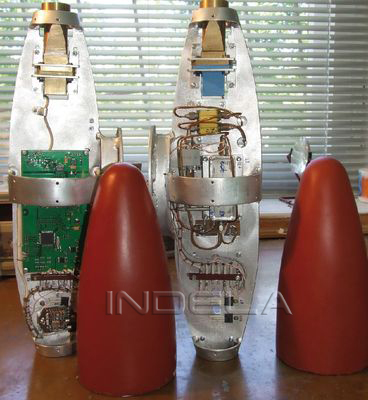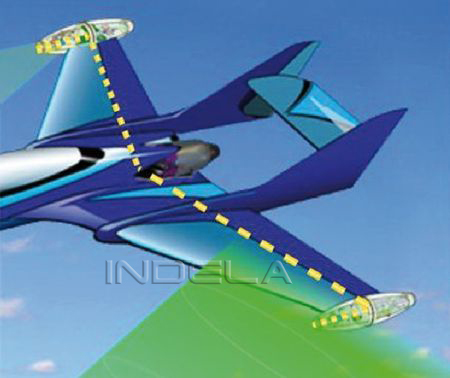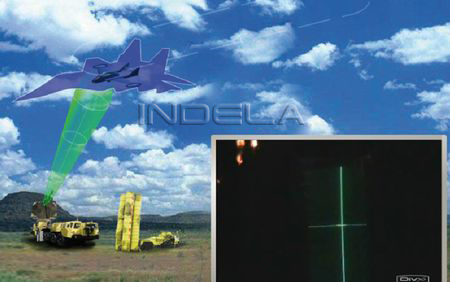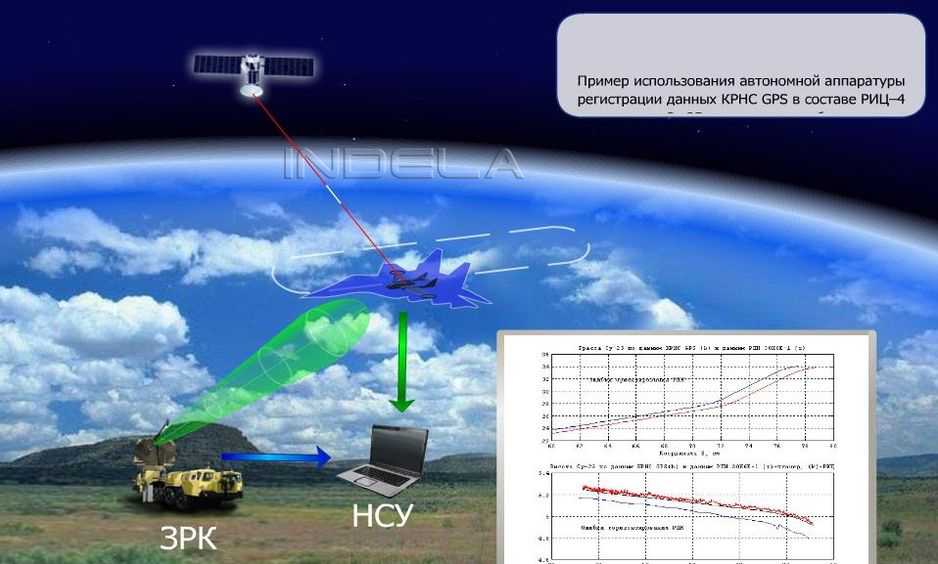INDELA RIZ
Radar Target Imitation Equipment

Description
Standard air targets for shooting radars and radar target seekers of aviation and anti-aircraft rocket systems are:
- cruise missiles “air to surface” with an airframe on Stealth technology with EIT 0.1…1.0 m² and low-sized reconnaissance
UAV cruise missiles without the usage of Stealth technology, CM with antenna systems of Active radar target seekers, percussion UAV, instructional plains etc. aircraft with EIT 1.0…3.0 m²;
- aircraft of fighters, all-purpose aircraft fighters, aircraft of light front-line aviation and low-flying attack aircraft with EIT 5.0…10.0 m², heavy aircraft of front-line aviation with
EIT up to 15.0 …20.0 m²;
- transport and war aircraft, AWACS aircraft, fuelers etc. with more EIT than 30 m²;
Technical characteristics
| Angular domain of imitation relative to the axis UAV | ° | ±30 |
| Maximum launch power of a retransmitting signal | W | 0,7 |
| Voltage | Vt | 12 ±15% |
| Power consumption | W | not more than 20 |
| Continuous operating time | h | not less than 1 |
| Equipment Weight | ||
| Reception Microwave unit | kg | not more than 0.3 |
| Transmitting Microwave unit | kg | not more than 0.3 |
| Analysis and Operation unit | kg | not more than 0.4 |
| Receiving antenna | kg | not more than 0.1 |
| Transmitting antenna | kg | not more than 0.1 |
| Cables set | kg | not more than 0.2 |
Purpose.
Radar Target Imitation Equipment (hereinafter Equipment) is intended for a signal (on the air) imitation of an aerodynamic air target of a set type for radar stations (RS), radar scan/tracking of surface-to-air rocket systems (SRS) and aviation rocket systems of ntercept (ARSI) as well as radar target seeker (RTS) of and aviation operating missiles. The Equipment is used during trial flights and shooting tests SRS (ARSI). The Equipment performs the functions being a part of unmanned aviation vehicle (UAV), that includes an unmanned aircraft-target (UA-target) with an autonomous operating system, surface system of operation and indication, parameters recording equipment. The Equipment may be used autonomously for surface checking of RS SRS (APSI) and radiolocating RTS.
Operation principle.
The Equipment performs the functions or radar imitation of aerodynamic target of a set type by probing signal reception from RS SRS (APSI) or radiolocating RTS rocket, its analysis, allotment of required types of modulation and radiation into the space. The Equipment is designed by a retransmitting principle that provides its high acceptance rate (practically unlimited quantity of simultaneously operated RS (RTS). The Equipment ensures the record of flight information that can be used for an operative or postflight analysis of operability, operation regimes of RS (RTS) and their parameters. The Equipment can be used in a special regime of imitation of a moving target at a lowered launch power for a surface operability checking of RS SRS (APSI).
Besides, RTI ensures:.
– imitation of Rayleigh fluctuations of Image tubes typical of the case when linear dimensions of the target of a complex geometric shape are much bigger than a wave length of a probing signal;
– imitation of airframe and modulation components of the spectrum of the reflected signal, that is typical of radar observation of an aerodynamic target having rotating parts (airscrew blades, compressor blades, turbines of a propulsion device).
The Equipment provides: - radiation of a signal of calibrated non- fluctuated capacity (regime “Standard”) for experimental evaluation of sensitivity of reception path of RS SRS (APSI);
– receiving and calibrated measurement of pulsed power of a probing signal RS, that provides experimental evaluation its energy potential;
- imitation of a reflected signal from a real aerodynamic target of a geometrical shape with fluctuated ECS;
- imitation of “airframe” and “modulation” components of the spectrum of the reflected signal (modulation components occur on the account of re-reflection of the probing signal from mechanically rotating elements of the target: airscrew blades, turbines blades, compressor etc.;
– preliminary (preflight) and prompt operation of imitated signal parameters;
- operative signal of actual flight information in real time;
- decoding and visualization of recorded flight information with the aim of postflight analysis.



Copyright © 2010-2015 INDEPENDENT DEVELOPMENT LABORATORY Inc. All rights reserved. Pricing, specifications and content all subject to change without prior notice.


